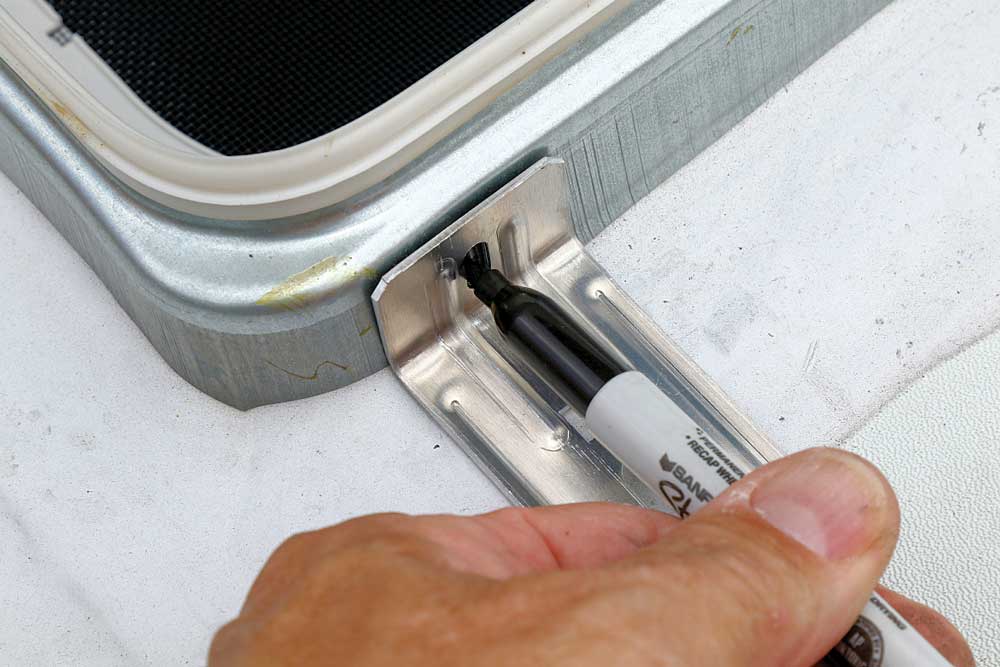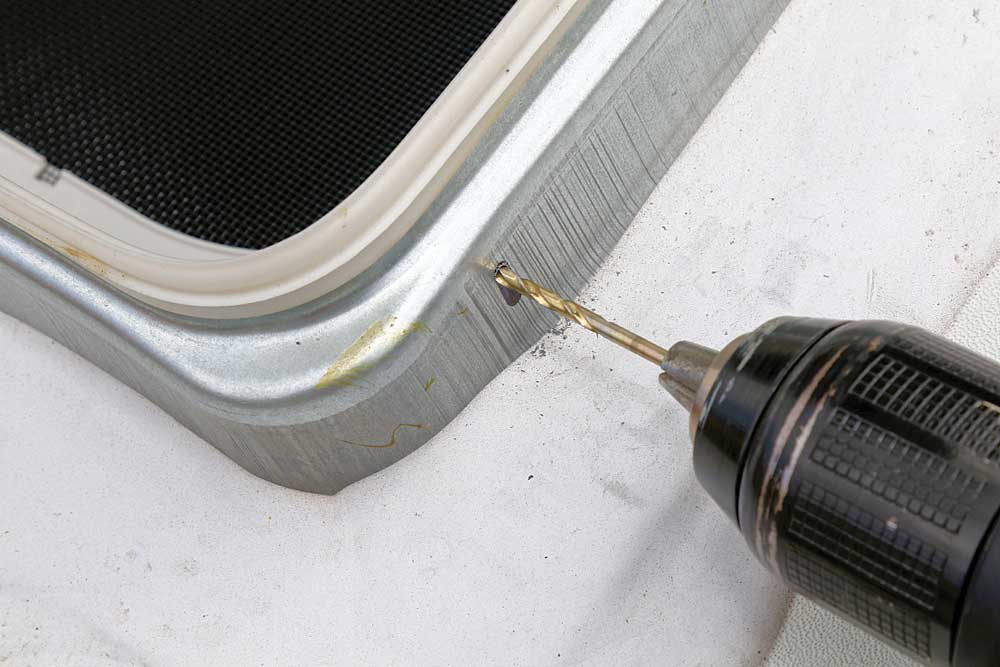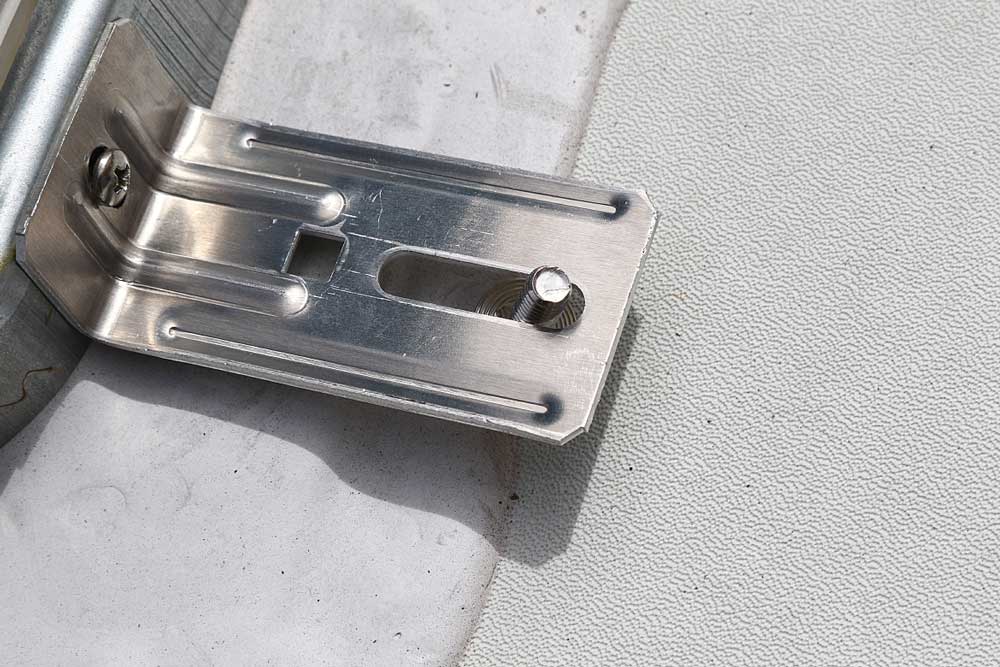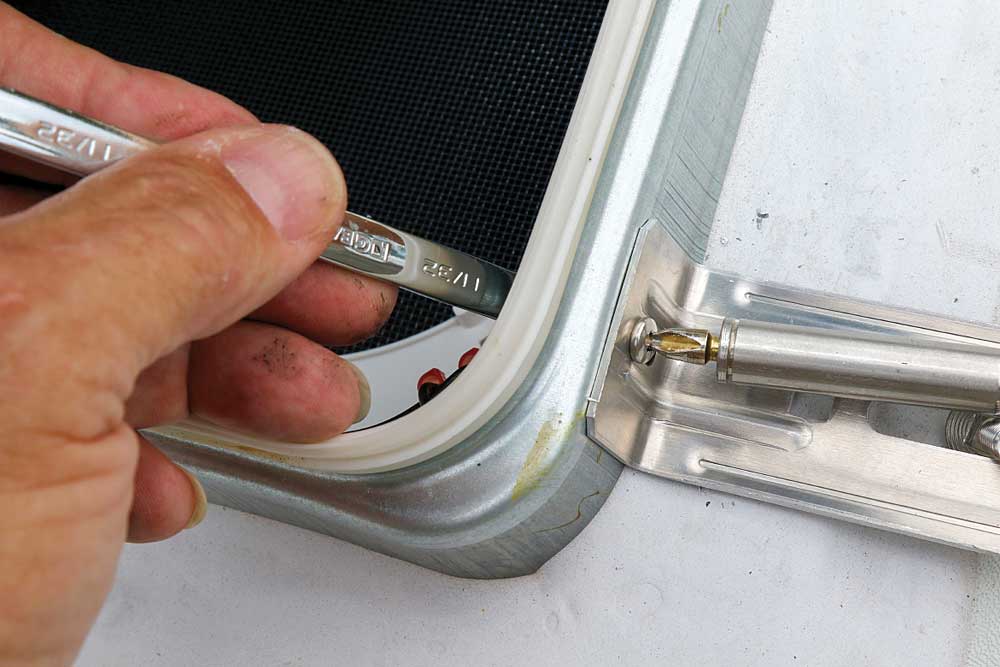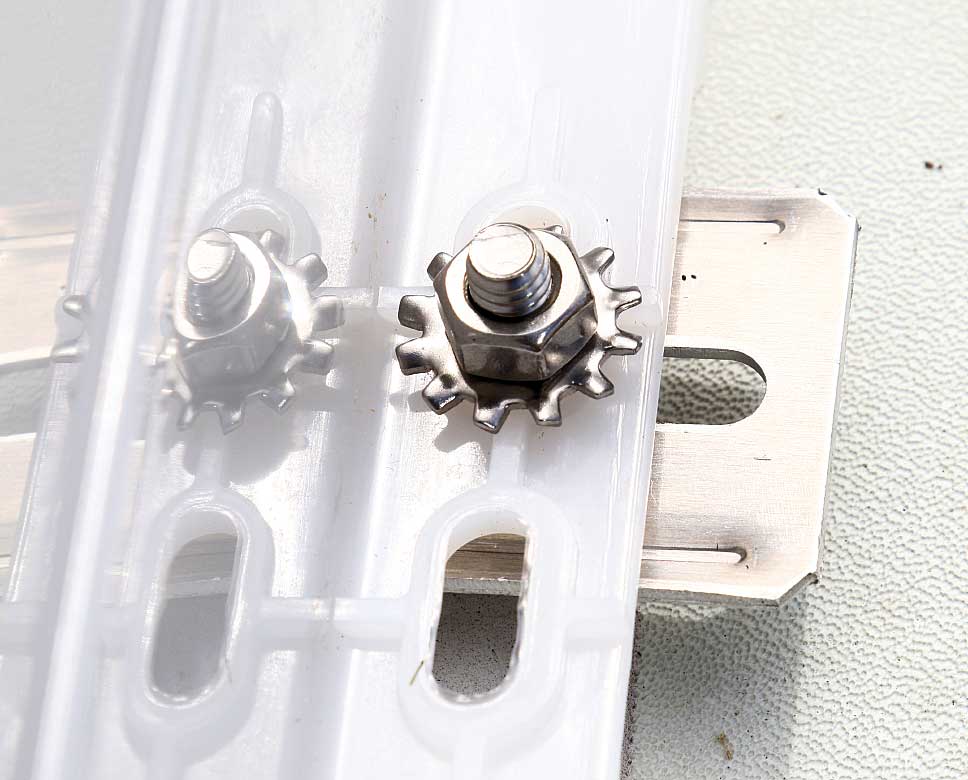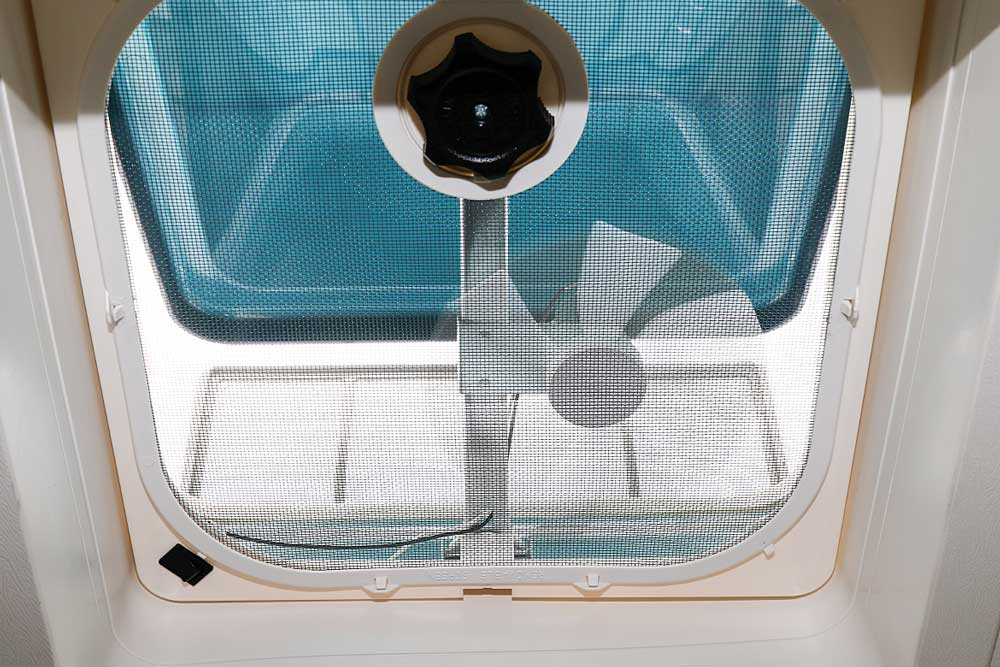Maxxair’s roof-vent covers help keep the air circulating while in the rain and on the road
RVs come in many brands, shapes, styles and sizes, but one thing common to almost all of them is the presence of at least one standard 14-by-14-inch crank-up roof vent, typically found in the bathroom and opened by way of a knob or crank mechanism. There may also be one or more over the main sleeping area or living area.
In the bathroom, the vent may have a motorized fan that can remove warm, moist air during a shower, to prevent potentially damaging condensation on or in the walls, or the pungent aftermath of that beans-and-hot-dogs dinner. In the galley or living area, it can remove cooking odors and warm, musty or stale air, and improve overall air circulation and comfort.
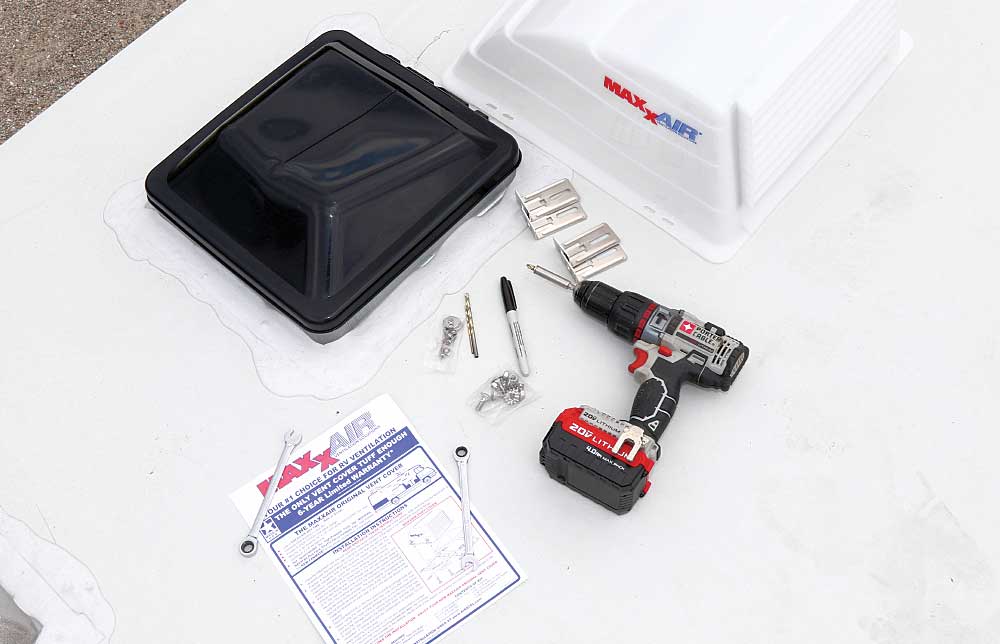
Before starting the installation, have everything you need on the roof to avoid multiple trips up and down the ladder. In addition to the Maxxair vent-cover kit, you’ll want a cordless drill, 1⁄8-inch and 3⁄8-inch bits, a Phillips-head screwdriver or driver bit, 11⁄32-inch and 7⁄16-inch wrenches, something to mark the mounting holes with, and a broom or hand vacuum (not shown). Photos: Rick A. Diaz
Opening the roof vents before turning on the air conditioner can also help cool the trailer quicker, as the warmer air at ceiling level will be drawn out instead of needing to be cooled. In milder climates, with the entry door open and the screen door closed, these vents can keep the cabin comfortable enough without using the air conditioner, particularly in the evening when it’s cooler outside.
 One problem with these crank-up vents is that they need to be closed in the event of rain to prevent water entry. Another problem is that RVers sometimes forget to close them before getting on the road, and they can easily be damaged, as they are typically constructed of lightweight plastic and are not made to withstand highway winds. The same is true of high winds when stationary.
One problem with these crank-up vents is that they need to be closed in the event of rain to prevent water entry. Another problem is that RVers sometimes forget to close them before getting on the road, and they can easily be damaged, as they are typically constructed of lightweight plastic and are not made to withstand highway winds. The same is true of high winds when stationary.
Maxxair, a division of Airxcel, offers vent covers that provide a cost-effective means to maximize roof-vent operation and keep you from wondering if you remembered to close the vents before leaving the trailer, turning in for the night or hitting the highway.
Every style of Maxxair vent cover is designed so it won’t compromise the existing seal of the roof vent. Installation is fairly simple, requiring nothing more than a drill (cordless preferred) and a few common hand tools. All necessary mounting hardware (aluminum and stainless steel) is included with each cover.
Be sure your RV’s roof is walkable before starting and that you can safely move around on it, as you may be in an awkward position when drilling the four required mounting-bracket holes. Don’t worry; these holes go in the metal frame of the roof vent, not the roof of the trailer. If the roof vent is close to the edge of the trailer on one side, it might be safer
to use a ladder for that part of the installation. If you’re uncomfortable working on the roof, seek out a professional to install the vent cover.
Check Here for More RV Upgrades
Maxxair vent covers carry a six-year warranty against manufacturing defects and come in a variety of colors to match your style and needs: black, smoked tint, almond, silver, champagne and the translucent white we installed here.
The Maxxair Original Vent Cover has a built-in screen at the back louvers, which is removable and washable, and gives a second layer of protection to keep leaves, bugs and varmints out. The wide, overlapping design helps keep damaging UV rays off the roof-vent sealant, potentially extending its life.
| See Related Video |
Maxxair manufactures a full line of vent covers and vent shades, as well as replacement shrouds for Coleman-Mach air conditioners. The company also makes powered roof fans in regular and low-profile versions, with or without rain sensors, to fit almost any rig, from pop-up campers to travel trailers, fifth-wheels and motorhomes. If it helps get air into or out of an RV, Maxxair makes it.
 Residing in West Palm Beach, Florida, Rick A. Diaz is an avid mountain biker, woodworker and former Hollywood, California, custom Harley-Davidson shop owner, as well as a motorcycle and truck journalist. Rick will be taking his fiancée, their two retired racing greyhounds and an Italian greyhound puppy on adventures in their Winnebago Minnie Plus while contributing to Trailer Life.
Residing in West Palm Beach, Florida, Rick A. Diaz is an avid mountain biker, woodworker and former Hollywood, California, custom Harley-Davidson shop owner, as well as a motorcycle and truck journalist. Rick will be taking his fiancée, their two retired racing greyhounds and an Italian greyhound puppy on adventures in their Winnebago Minnie Plus while contributing to Trailer Life.

